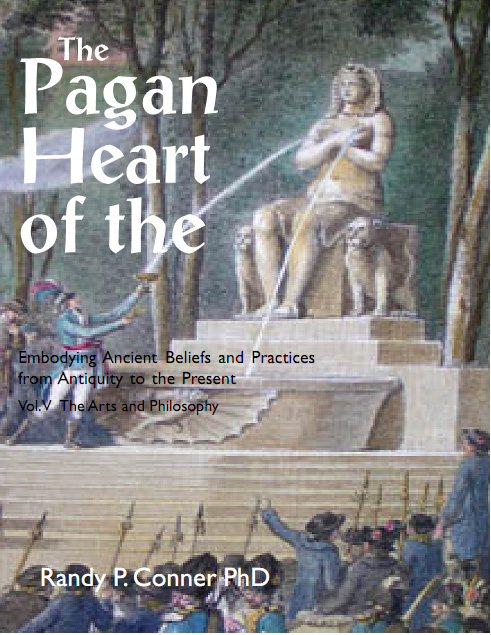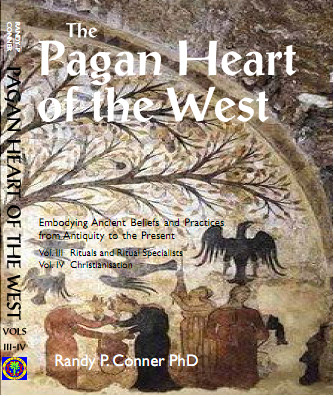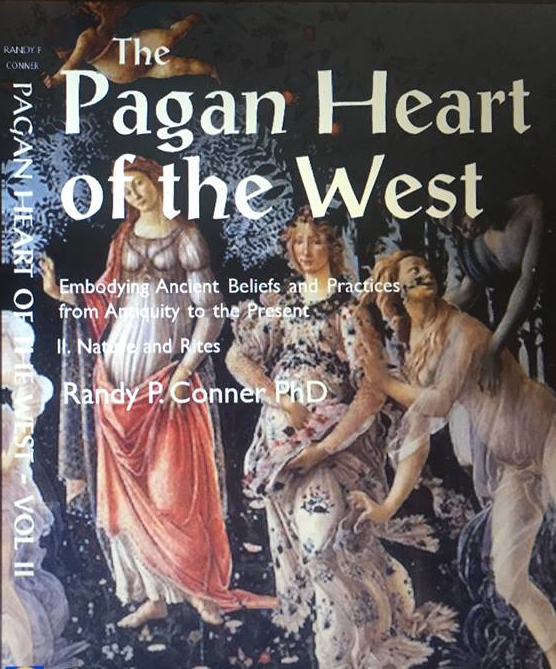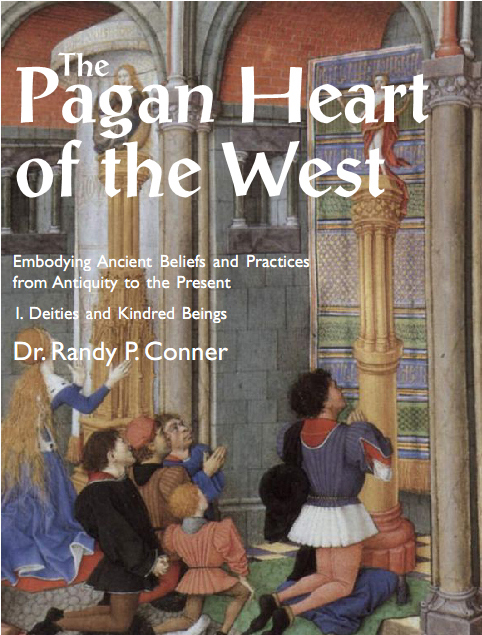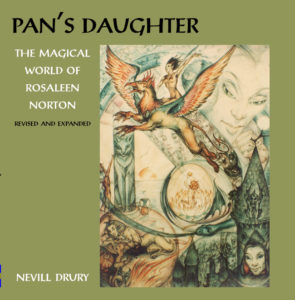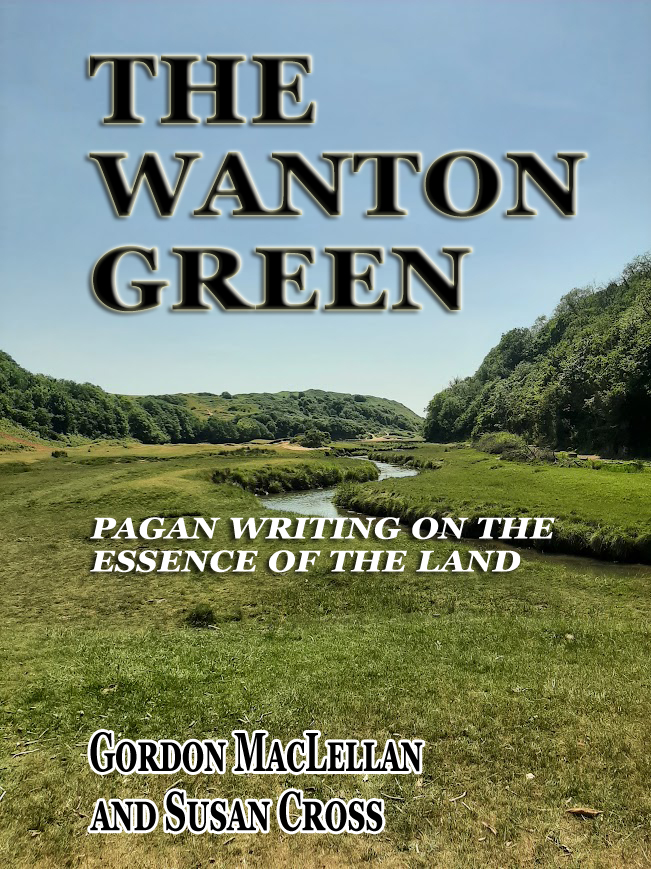A Manual of Celtic Magick
Jan Fries

Cauldron of The Gods
A Manual of Celtic Magick
Jan Fries
Format:Softcover
ISBN:
£24.99/US$40 (including post and packaging.)
Subjects: Celtic Magick/Druidism.
–
‘If you have only one book on the Celtic past and present, this has to be the one’- The Pentacle
‘Imagine the forest. As darkness falls, the somber beeches disappear in misty twilight and shadows seem to gather under their branches. Far away, the blackbird’s call tells of the coming of the night. The birds cease their singing, silence descends, soon the beasts of the night will make their appearance. Between tangled roots, hidden by nettles and brambles, the earth seems to ripple. A few humps of earth seem to emerge from the ground. They are the last traces of burial mounds, of mounds, which were tall and high 2500 years ago. Many of them have disappeared, hidden by tangled roots of beech and oak, ploughed flat by careless farmers, others again show caved-in tops where grave robbers have looted the central chamber. The locals shun these hills. There are tales that strange fires can be seen glowing on the mounds, and that on spooky nights, great armed warriors arise from their resting places. Then the doors to the deep are thrown open and unwary travelers have to beware of being invited into the halls of the dead and unborn. Here the kings of the deep feast and celebrate, time passes differently and strange treasures may be found. Who knows the nights when the gates are open? Who carries the primrose, the wish-flower, the strange blossom that opens the doors to the hollow hills?’
‘Highly Recommended’ – The Cauldron
Buy UK
Buy USA Edition (& Rest of world)
From Pagan Dawn:
Anything by Jan Fries is these days immediately snapped up by most chaos magicians out there, and this one should be no exception. Fries is an expert in his field and his work is always widely explored and well presented. Occasionally, I find his writing style a little patronising towards those fluffy-bunny Pagans amongst us, but come on, we all have to start somewhere. As such, 1 would not recommend this book except for the serious occultist who perhaps has not looked too closely into Celtic magic and who wants to try something a little different. Fries knows that in order to be accomplished you need to know where your magick comes from as much as where you want it to take you, and his historical tracing of Celtic magick is knowledgeable and well-researched. The connections he makes to modern-day techniques and practises are seamless and appear almost effortless, except we know Fries did not get to be the specialist he is without a lot of hard work and extensive study. A must for all serious magical practitioners.
Cauldron of the Gods (Detailed contents)
Welcome to the Nemeton
People of the Mounds
The Mound Journey; Raising the Dead; Worship of the Height
Mysteries of La Tene
Talismans; Dangerous Dead and Unusual Burials; Offerings to the Deep; The Sanctity of Water; Exercise: Into the Deep; Places of Worship; Sacred Groves; Temples of Gaul Exploring Gournay; A Hoard of Trophies; Roquepertuse; Tracing Shadows Through a Maze; Teutates, Esus and Taranis ; A Deity of Horses; Rhiannon and the Morrigan; Lugus; Gods of the Land; Cernunnos; Matrones; Divine Beasts; Head Cults.
Druidic Dreams Druids in the Classical Period; Riddles from Antiquity; The Decline of the Druids; Druids in Legend; Druidic Revival;
Evolution of the Bards
Bards and Druids.
A Confusion of Faiths
A Christian Buried Alive; Bardic Christianity;Book of Taliesin
The Filid of Ireland
The Scholar’s Primer; Exercise: The Unique; Poets and Philosophers; Heritage of Babel; The Poet’s Path; Under a Golden Branch; Celtic Harps; From a Dark Cell Land of the Living.
Three Rays of the Awen
Bardic Frenzy; The Spirit of Prophecy; The Wild Man from the Mountains; Breath of the Awen; The Quest for the Muse; Hanes Taliesin; Three Inspirations of Ogyrven; The Trefoil Sign; Deity of the Poets; Ritual: Bride’s Bed; The Personal Muse.
Taliesin Penbeirdd
Who is the Historical Taliesin? The Mythical Taliesin; Trouble with Maelgwn; Chair of the Bards; Ritual: Chick of the Chair; A Torrent of Questions; Exercise: Riddle Magick; A Question of Identity;
Enchantment
The Fire of Motivation; The Gift of the Nettle; The Rite of Cursing; Bright Blessings; Lorica; Greetings for Sun and Moon; Spells of Healing; Gesture; Nightfears, Evil Eye and Spells of Destruction; Magical Battles;
Tales of Transformation
A Net of Romance; The Stupid One; Oral Tradition; Evolution of Song; The Once and Future King; Exercise: The Time Frame; Exercise: The Cultural Frame; Shaping Reality; Exercise: Your Story; Ritual Story-telling; The Enchantment; Therapeutic Storytelling Therapeutic Functions; Artful Vagueness; Tools for Hallucination; Stories and Self-Hypnosis; Stories as Spirits; Enchanting Others; A Forest Walk.
The Secret Arts
The Frith; Imbas Forosna; Dichetal Di Chennaib; Teinm Laeda; Cetnad; Toghairm The Ever Hungry Cauldron; Cauldrons of the Fili; Cauldron of the Underworld; Arthur’s Quest; Nine British Otherworlds; Books of Fferyllt; The Aeneid; Virgil the Magician; A Rite of Rebirth; Burials in Several Phases; Rites of Dismemberment; Siberian Initiations; The Chodpa Trance; The Cauldron Rite; Cauldrons of Creativity; The Hedge of Mist .
Trees of Eternity
The Battle of the Trees; Ogham Trees; Origins of Ogham; Tree Magic; A Tree Companion; A Hand Full of Forests; The Matrix of Nemetona;
Coda: The bed of Taliesin
Appendix
A rough time table regarding events mentioned in this book; Bibliography; Index
Part of ironage ringwall from the Taunus, Jan’s drawing from ‘Helrunar’. I remember climbing this with Jan during my initiation into the mysteries of the forest. – Mogg
